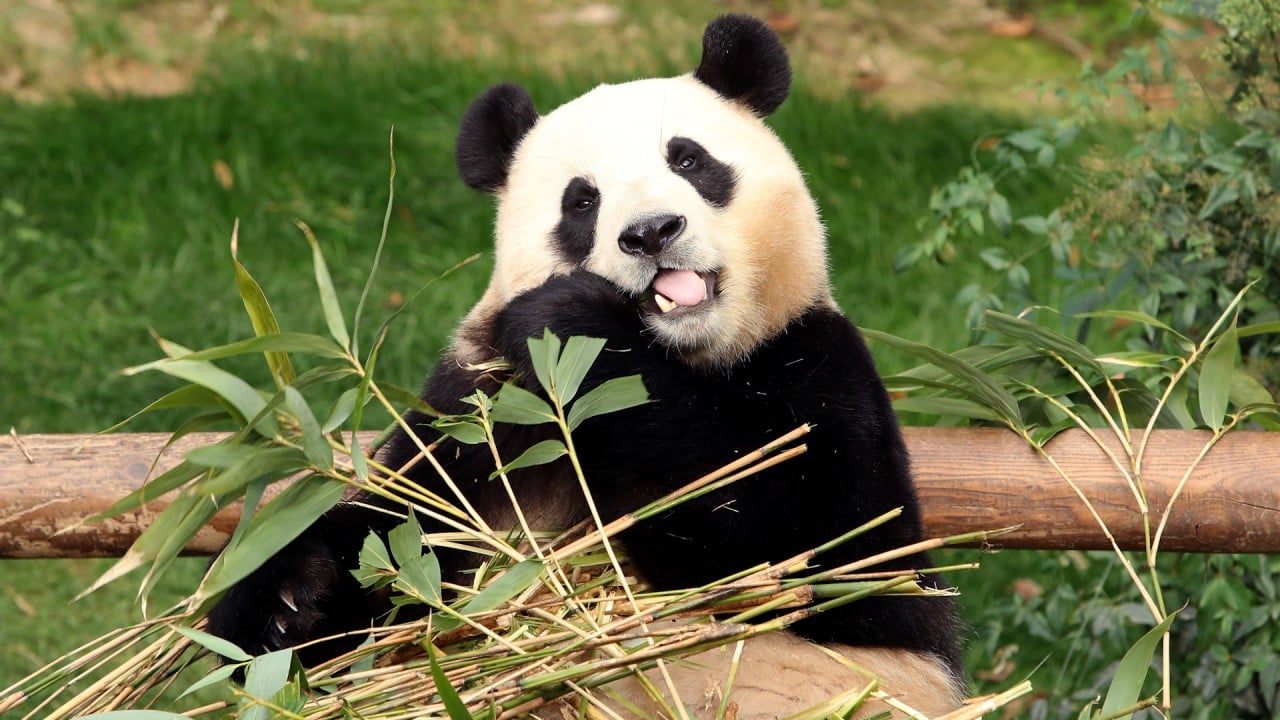
Chinese panda centre denies accusations that South Korea-born bear Fu Bao is being abused
- The refutation comes after South Korean fans take out ad in New York’s Times Square saying the animal has been mistreated in China
The refutation came days after electronic billboard ads in New York’s Times Square, paid for by South Korean panda fans, accused China of treating Fu Bao poorly since her return to her homeland.
Shanghai-based news portal The Paper on Saturday outlined the allegations by South Korean panda fans and refuted all of them, citing clarifications from the China Conservation and Research Centre for the Giant Panda.
Responding to speculation that Fu Bao had lost fur on her back “due to abuse and injury”, the report noted that the conservation centre released a video on May 28 saying the bear had a patch of fur on her neck that was shorter than the surrounding fur, but no pathogens had been found during tests.
“There were no abnormalities such as allergies, scabs or thickening of the skin,” the centre added.
Chinese panda researchers previously noted that fur loss in giant pandas could be due to pathogens, endocrine or metabolic issues, vitamin levels or environmental factors, but that most of the time it was simply due to the change in seasons.
Citing research from the Chengdu Research Base of Giant Panda Breeding, the report said that in the absence of redness, swelling, fever, skin lesions or parasites, Fu Bao was likely displaying normal seasonal changes in fur.
The report also noted that Fu Bao’s father, a bear named Le Bao, appeared to have fur loss above his hind legs while living in a South Korean zoo, according to a video posted to YouTube by a South Korean panda keeper in March.
Test results showed that the fur loss was not caused by illness or skin disease, and South Korean zookeepers reached out to Chinese experts to find ways to prevent the fur loss from spreading, according to The Paper.
After the consultation, Le Bao’s minders adopted measures to address the fur loss, including better temperature and humidity control, vitamin supplements, improved disease monitoring, and keeping the affected area dry.
Some South Korean fans also speculated that a small dent that had recently appeared on Fu Bao’s head was evidence that researchers were “extracting panda body fluids”.
According to the Chinese media report, the conservation centre said this was because Fu Bao always rests her head on a corner of the cage when she sleeps, causing a small indentation.
The centre also dismissed speculation that Fu Bao was forced to wear a collar in China, as some fans noticed there were marks on her neck in one video.
The centre explained that the marks naturally appear when Fu Bao walks with her head stretched forward, resulting in a ringlike shape on her neck that disappears once she sits down or changes posture.
It also clarified that Fu Bao would be on public display in June, after she adapts to the new facilities. She was released from a month of quarantine at the Shenshuping Panda Base in Sichuan’s Wolong National Nature Reserve on May 4.
The panda conservation centre said it had contacted police after photos of a person touching and feeding Fu Bao circulated in May. The photos gave rise to rumours that Fu Bao had made contact with humans who were not centre staff members before she was certified as fit to meet the public.
Chinese police are still investigating the matter.
The news that giant pandas would return to the US capital came six months after pandas Tian Tian, Mei Xiang and their cub Xiao Qi Ji left the zoo last year in a departure seen as symbolic of deteriorating Sino-American relations.



